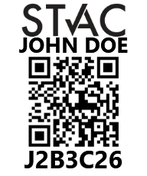|
When it comes to employer Health & Safety Plans, the minimum requirements for an accident prevention program should include inspections of the workplace for potential hazards, training and evaluation of employees for tools and equipment on the job, and personal protective equipment (PPE) training and use practices. While these three components are important, many safety and health managers will agree that there are additional elements that should be included. Here are STAC’s six elements to a proper Health & Safety Plan:
Leadership Involvement An effective prevention program must start from the top. With C-Suite and managing directors actively participating, tracking, and committing time and resources to your plan, this will leave a lasting impression for all employees involved and help reinforce positive behaviors mirrored in your plan. Studies have shown that management involvement in your program have a direct impact on reducing your DART and TRIR rates. Worker Participation Once management has helped create and implement the safety plan, it is up to the employees to participate in processes to help identify workplace hazards. Types of employee participation can include:
Hazard Identification & Assessment With employees actively participating in identifying workplace hazards, an assessment can be made with a Job Hazard Analysis to help identify ways to prevent and control the hazards. An example of a Job Hazard Analysis can be found here: OSHA JHA Sample Form Hazard Prevention & Control Once hazards are identified, employers can look to eliminate or control the hazards using OSHA’s Hierarchy of Controls:
Education & Training Providing employees with the proper education about the workplace hazards and specific training on how to prevent, eliminate, and control these hazards are pivotal to keeping employees safe. Education can include orientation, safety manuals, and SDS sheets for the different chemicals and materials they will be handling. Workplace specific training should be done by a qualified employee and be given to those who operate equipment and machinery for their job. Program Evaluation The final element in the program is to evaluate how well your plan eliminates, prevents, and controls hazards. Different types of evaluations can include:
While Health & Safety Plans can have many different elements, the goal of all plans are to help keep employees safe and reduce the risk of injuries in your workplace. Remember, safety is everyone’s responsibility. To keep the conversation going, download the Health & Safety Plan Toolbox Talk (TBT) below or click on the QR code to see how STAC can be part of your plan.
0 Comments
|
AuthorSTAC Admin Categories
All
Archives
July 2024
|


 RSS Feed
RSS Feed